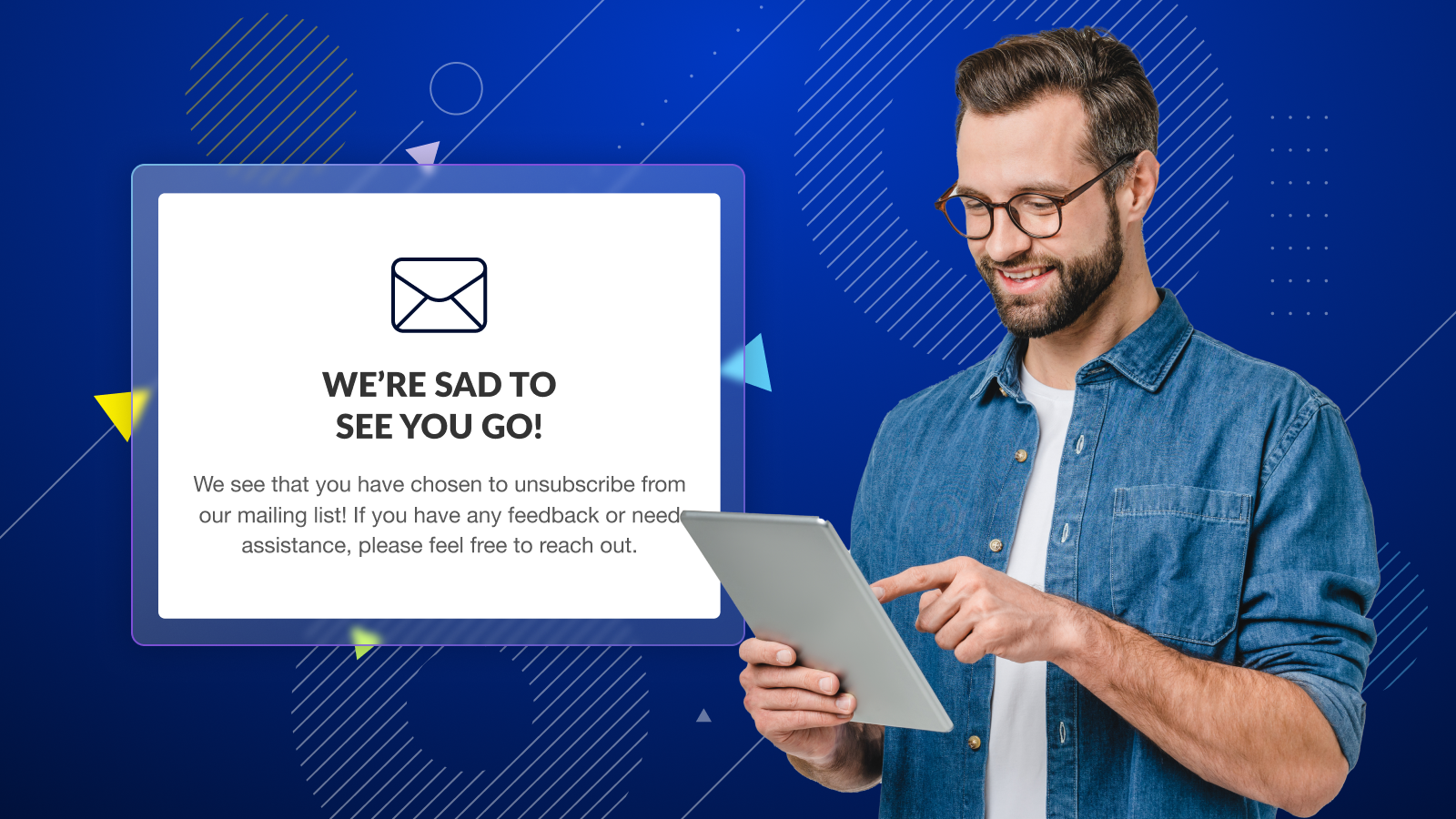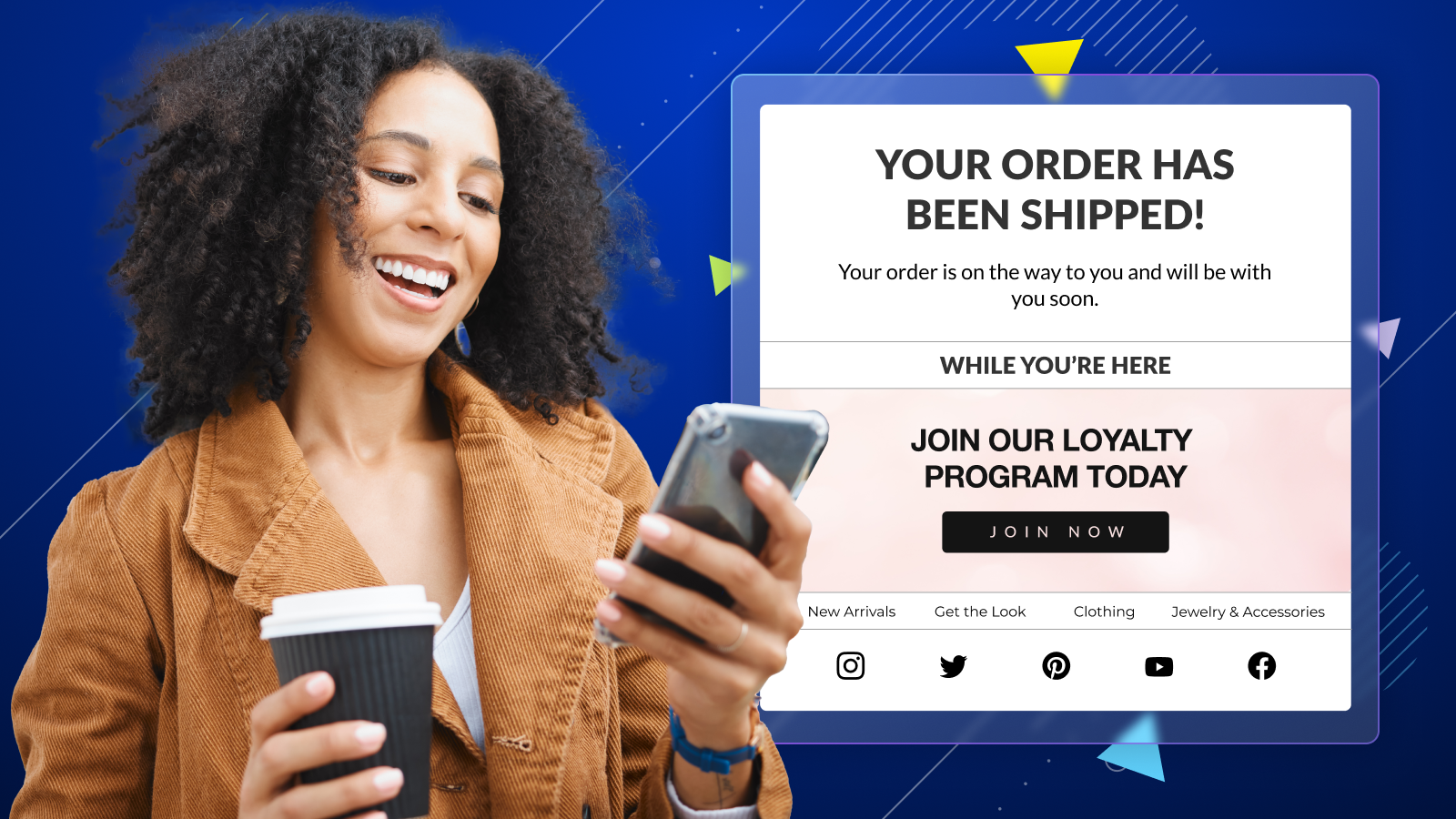Contents
Improve customer retention rates with parcelLab Engage.
Learn moreWhat is churn rate?
Published on: September 28, 2023
Updated: November 17, 2023
Churn rate is the proportion of customers or subscribers who leave or stop using your products or services during a given time period. While it’s typically a metric tracked by SaaS companies, churn is also relevant to ecommerce and DTC brands, particularly those that implement a subscription-based business model.
How do you calculate churn rate?
You calculate your churn rate by dividing the number of customers you lost by the total customers at the start of the time period. Then multiply that by 100 to get the percentage.
The formula for this calculation is:
Churn Rate = (Number of Customers Lost During the Period / Total Number of Customers at the Start of the Period) x 100
So let’s say you started the month with 100 customers and ended with 90. Your churn rate for that would be:
Churn Rate = (100-90/100) x 100 = 10%
Here’s a step-by-step breakdown of how to calculate your churn rate:
- Set your time period. Decide on the time frame you want to measure. This could be a week, a month, a quarter, etc., depending on the data you need to extract.
- Determine your starting number of customers. Count how many customers or subscribers you had at the beginning of the time period.
- Determine the number of customers lost. Count how many of those customers or subscribers you lost by the end of the time period.
- Calculate the churn rate. Plug the numbers into the formula above and calculate the churn rate.
As an additional step, you can choose to compare your churn with a previous time frame—e.g., last month or this time last year. That way, you can identify trends, evaluate the effectiveness of your retention strategies, and better understand seasonal fluctuations in customer behavior.
What is a good churn rate?
Churn rates vary across different industry and business models, but there are some benchmarks we can look at.
According to Recurly Research, B2B businesses generally have a lower (i.e., better) average churn rate (6.77%) vs B2C (9.91%).
This is because B2B customers often enter into longer-term contracts and face higher switching costs. With more stakeholders involved, deciding on a different vendor can be a lengthy process. B2C customers, on the other hand, have lower switching barriers and can make quicker decisions based on personal preferences.
Recurly also breaks down churn rate by industry. The company found that “Consumer Goods & Retail” has a churn rate of 7.55%—the highest among all industries in the study. Meanwhile, software had the lowest churn rate—4.75%.
| Industry | Churn rate |
|---|---|
| Software | 4.75% |
| Digital Media / Entertainment | 6.42% |
| Education | 7.22% |
| Retail and CPG | 7.55% |
| Business and Professional Services | 6.59% |
| Healthcare | 6.03% |
With this data in mind, you should be able to determine how your churn rate stacks up. If you’re in the retail sector, for instance, then keeping your churn rate below 7.55% would put you below the industry average—which is good.
Of course, you also want to consider your specific segment (e.g., apparel, luxury ecommerce, sporting goods, etc.) and local market dynamics when setting your benchmarks. After all, different segments can have varying levels of customer loyalty and purchasing patterns.
What are the different types of churn?
Churn can come in different forms. In this section, we outline the most common churn categories. Also, note that not all churn types apply to every business—more on this below.
Voluntary Churn – When customers actively choose to stop using your service or product. This can be due to dissatisfaction, finding a better or cheaper alternative, or they simply no longer need what you’re selling.
Involuntary Churn – This happens when customers are removed from your service not by their choice, but due to reasons like expired credit cards, bank issues, or other payment problems.
Contractual Churn – This type of churn happens when customers decide not to renew their contract once it expires.
Non-contractual Churn – This applies to businesses where there isn’t a contractual obligation, like ecommerce stores or most mobile apps. Here, churn is identified when a customer who once made purchases stops doing so.
Active Churn – This refers to customers who have been actively using a product or service and then decide to leave. It’s more concerning than passive churn because it indicates a potential problem with the product or service offering.
Passive Churn – This occurs when users who aren’t very active or engaged with the service decide to leave. These customers might have been likely to churn anyway, as they weren’t finding significant value from the product or service.
Product-Level Churn – This happens when customers don’t leave the company entirely but drop one or more of the products they were using. For example, a customer might keep one subscription but cancel another.
Full Churn – This is when a customer decides to stop using all of a company’s products or services entirely.
How do you reduce churn rate?
The right churn-busting strategy depends on the issue you want to address. Here are some general tips to help you lower your churn rate.
Enhance customer onboarding. See to it that your customers understand how to use your product or service. This will help them get more out of their purchases, which then reduces the likelihood of churn.
Design a smooth post-purchase journey. You can reduce churn by beefing up the post-purchase experience through proactive:
Doing so not only enhances customer trust and satisfaction but also fosters a sense of loyalty and connection with your brand.
Improve customer support. Prompt, helpful, and friendly customer service can resolve issues and dissatisfactions before they lead to churn.
Gather feedback. Conduct surveys or interviews to understand why customers might leave. Then make it a point to act on the feedback to prevent potential churn.
Monitor customer activity. Use analytics to identify customers who are less active or show signs of reduced engagement. Reach out to them with re-engagement campaigns, post-purchase marketing initiatives, or special offers.
Implement a loyalty program. Rewarding customers for their loyalty could be just the thing that’ll keep them on board with your brand.
Keep improving your offerings. Don’t get complacent. Continuously refine and update your product or service based on market demands and feedback.
Offer flexible pricing. Some customers might churn due to cost concerns. That’s why it can be helpful to offer different pricing plans or tiers to cater to various needs and budgets.
Touch base with customers regularly. Keep in touch through newsletters, updates, or personalized recommendations to keep customers engaged and informed. (Note: ensure you’re complying with privacy regulations such as GDPR, CCPA, etc.)
Create a community. Foster a sense of community among your users through forums, social media groups, or events. When customers feel a connection to a community, they’re less likely to churn.
Provide exit surveys. When customers decide to leave, ask them why. This can provide valuable insights into areas for improvement.
Focus on high-quality customers. Focus your acquisition efforts on high-quality leads that are a good fit for your product and more likely to remain loyal.
Proactively address involuntary churn. For subscription businesses, sending reminders about upcoming renewals, addressing failed payment methods, or offering multiple payment options can reduce involuntary churn.
Learn More About parcelLab's Product Suites
Provide a predictive delivery date that increases conversions, reduces uncertainty, and improves customer satisfaction.
Learn moreEnhance your post-purchase journey with personalized communications that keep customers informed every step of the way.
Learn more Retain
Retain
Turn potential customer dissatisfaction into an opportunity for revenue retention by digitizing your returns process.
Learn moreTransform Your Post-Purchase Experience
Learn more about how parcelLab can get you up and running quickly.
Book a demo
